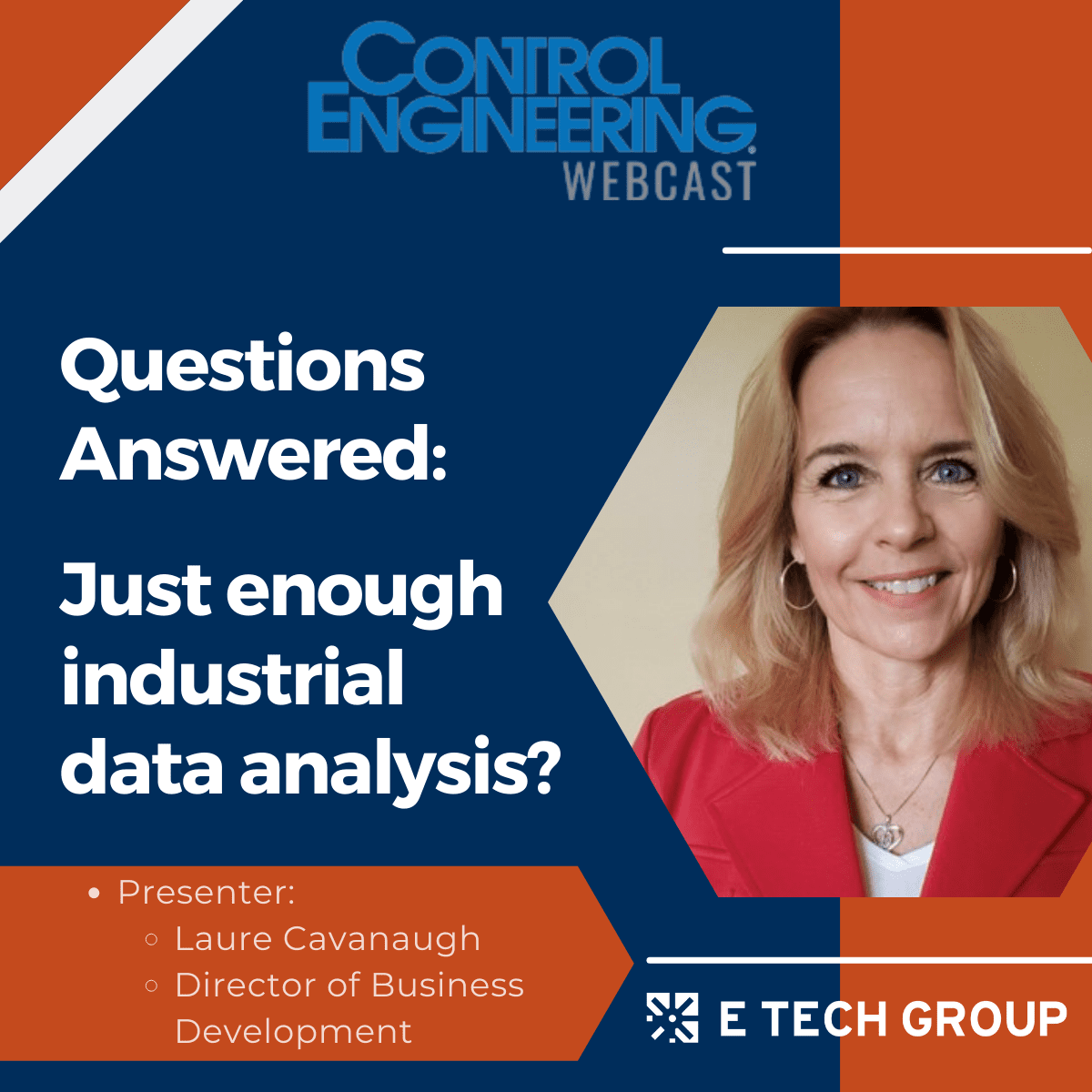
Director of Business Development, Laurie Cavanaugh presented a webcast for Control Engineering on Data Analysis with Matt Ruth of Avanceon.
Below are a few participant questions and answers from the webcast.
- Who is typically the driving force to engage on analytics in a manufacturing plant?
- A top-down approach to data analytics is typically driven by corporate and involves corporate IT and the use of accessible data in the form of financials and some operational data that has been consolidated (transactional data) based on enterprise resource planning (ERP) and business intelligence software. A bottom-up approach is typically driven by manufacturing departments or sites and starts with granular detail (time-series data) using historian databases and extraction tools offered by automation and controls manufacturers. Where true value and insight can be experienced is in the convergence of these two analytics’ efforts to connect the corporate financial and operational data with the more granular process execution data to provide a more thorough and holistic view of key factors that drive organizational decisions from top to bottom.
- What do you see as the future of analytics in manufacturing?
- The future is now. User expectations and demand for contextualized and intelligent information, driven by the tools used outside of the workplace, are countering old excuses or reasons for the failure to deliver fact-based analytics, directed decision making, and immediate access to critical information. Technical tools and platforms are not lacking. What is lagging is the complete understanding and response to the non-technical bottlenecks and barriers. Greater awareness of how analytics applies to processes and proper context for critical decision factors produce the value that addresses those non-technical barriers.
- Do you realistically see the wall between information technology (IT) and OT disappearing?
- The IT/OT wall or divergence must be overcome for the sake of shared responsibility: the health and wellbeing of the company for which they both work. While there is acknowledgement and acceptance of this fact (2 of the 4 As discussed in IT/OT convergence), the “heavier lift” part is action and accountability. We have found that engaging IT and OT in a shared goal and corporate need, such as cybersecurity protection or analytics and business intelligence, provides a focus and path to the final two As, action and accountability.
- What percent of your customers are actively involved with analytics?
- 100% of our customers engage in analytics – from Microsoft Excel spreadsheet graphs posted weekly on a bulletin board to real-time dashboards displaying key metrics on mounted screens throughout the plant and consolidated views at the corporate level. Differences are the breadth and depth of the analytics, the source of and timeliness of data, and the sophistication of the analysis being done on the data sets and in the user interface/user experience (UI/UX) delivery.
- Please review how to eliminate industrial manufacturing bottlenecks.
- I love to focus on the non-technical barriers having spent my career on the up-front business development process with our customers and their teams. Without the people and the passion for change to make a positive impact for the organization, it won’t matter how technically “cool” a solution is. Stakeholders across all levels of the organization need to be engaged early and updated often. While many won’t have a “vote,” they can certainly have a “voice.”